LED strip lights are a popular and efficient way to add accent lighting to a room or outdoor space. They are versatile, easy to install, and come in a variety of colors and lengths.
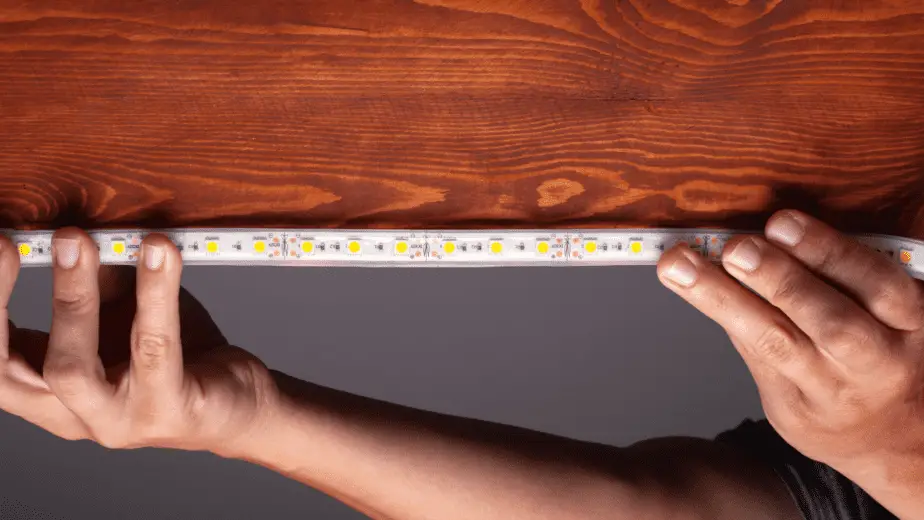
However, if not properly secured, LED strip lights can become loose or fall off, leading to potential hazards or damage. One question that may arise is whether it is safe to use super glue to secure LED strip lights.
In this article, we will explore the potential risks and benefits of using super glue on LED strip lights, as well as alternative methods of securing them.
Super glue
Using super glue on LED strips can be a quick and easy solution for securing them in place, but it’s important to consider a few factors before using them.
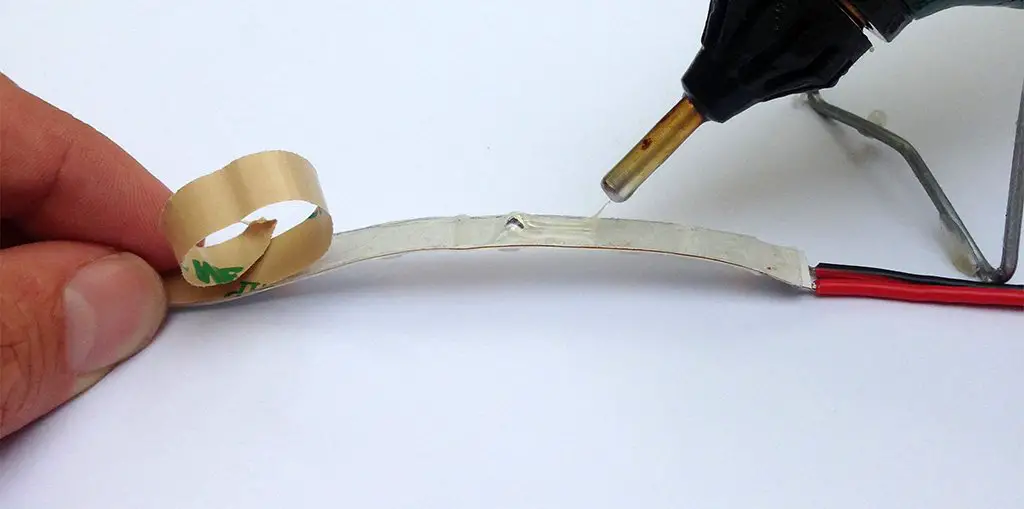
First, it’s important to consider the type of surface you are trying to stick LED strip lights to.
Super glue is not suitable for use on certain materials, such as foam, rubber, or some plastics, as it may not adhere well or could damage the surface.
Keep in mind that using super glue on LED strips may not provide a permanent solution. The glue may eventually wear out or become loose over time, requiring you to restick LED light strips.
Proper techniques for applying super glue to LED strip lights
There are a few key techniques to keep in mind when applying super glue to LED strips.
Firstly, it is important to make sure the flat surface where the LED light strip will be attached is clean and dry. Any dirt or moisture on the surface can affect the bond of the glue and may cause the LED light strip to come loose over time.
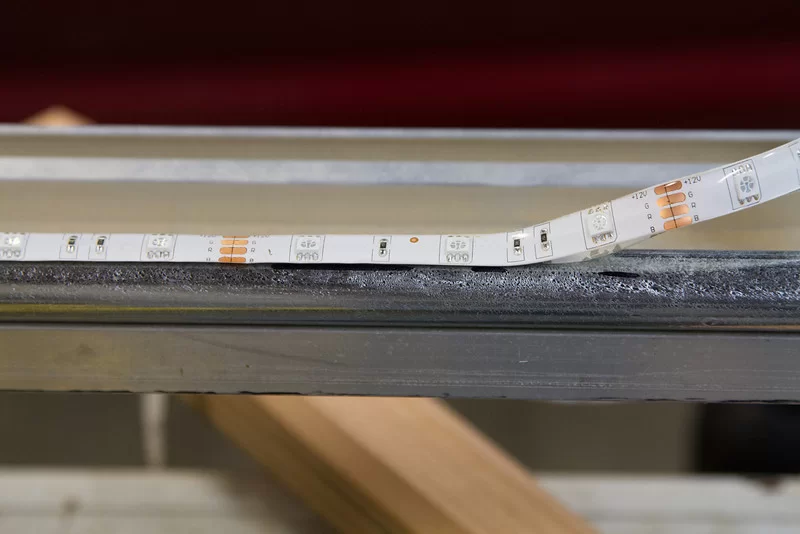
Use a small amount of glue, as using too much can cause the glue to drip or run, potentially ruining the appearance of the LED light strip. To apply the glue, you can use a small brush or toothpick to apply a thin, even layer of glue to the surface.
Make sure that the glue is applied evenly along the entire length of the LED strip, as this will help to ensure a strong bond. Once the glue has been applied, it is important to allow it to dry completely before turning on the LED strips.
Avoid handling the LED strip or applying pressure to it while the glue is drying, as this could affect the bond of the glue and cause the light strip to come loose. After the glue has fully dried, the LED strip should be securely attached and ready for use.
Advantages and disadvantages of using super glue on LED strip lights
There are both advantages and disadvantages to using super glue on a LED strip light.
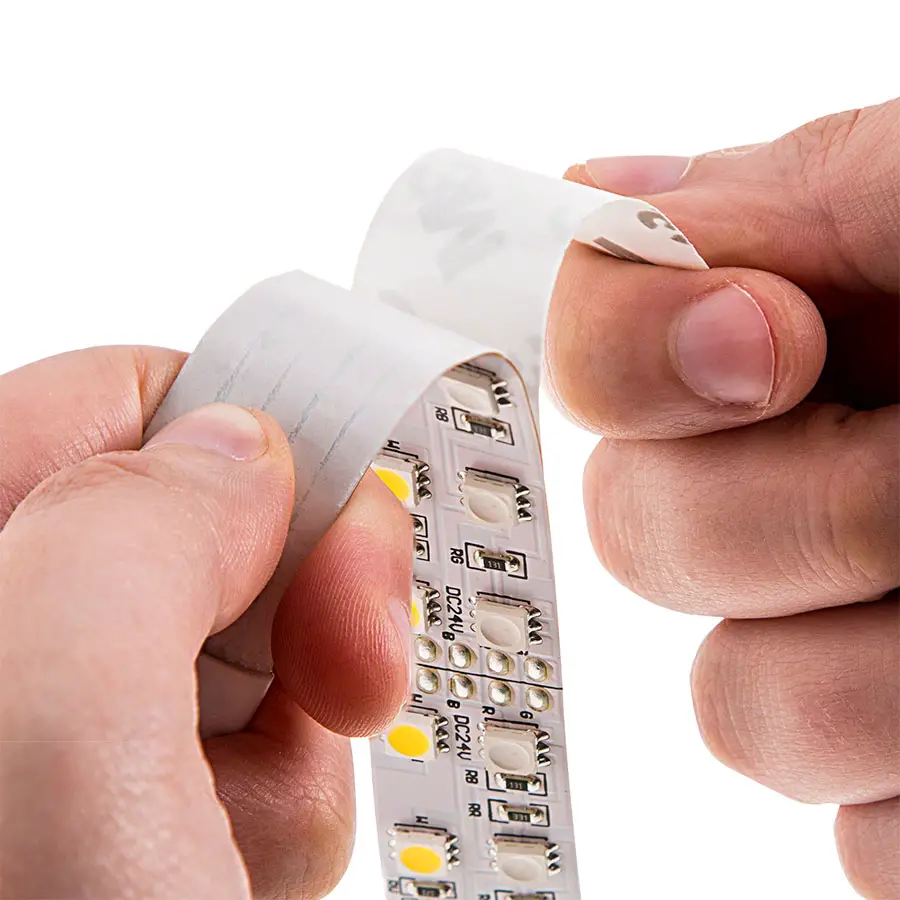
One advantage is that it can provide a strong and durable bond, ensuring that the strip lights stay in place. This can be particularly useful in situations where the strip lights will be subjected to vibration or movement, as the glue will help to keep them securely attached.
Regardless, there are also some potential disadvantages to using super glue on LED strips. For example, it can be difficult to remove the glue once it has dried, which can make it challenging to replace the strip lights if necessary.
Further, the glue may not be as flexible as other adhesive options, which could cause it to break or become damaged if the strip lights are subjected to bending or flexing.
Other alternatives to stick LED strips
There are several alternatives to using super glue to stick or restick LED strip lights.
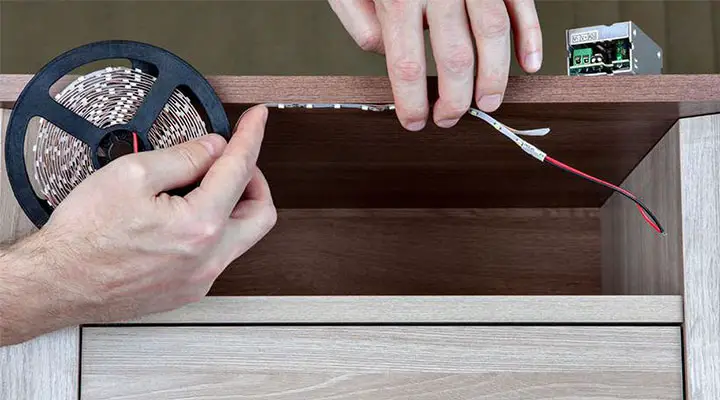
Since certain surfaces could need a stronger or more flexible solution, it’s crucial to select the proper adhesive or mounting putties for the exact type of LED light strips and the surface they will be attached to.
It is generally not recommended to staple LED strip lights. Staples can potentially damage the wire insulation, causing a short circuit or other electrical issues.
Instead, it is best to use a suitable adhesive or mounting putties specifically designed for use with LED lights. Some options include double-sided tape, mounting putty, hot glue, and Velcro strips.
Double-sided tapes
Double-sided tape is another option for attaching LED light strips on flat surfaces. It is designed to adhere to both surfaces and provide a long-lasting bond.
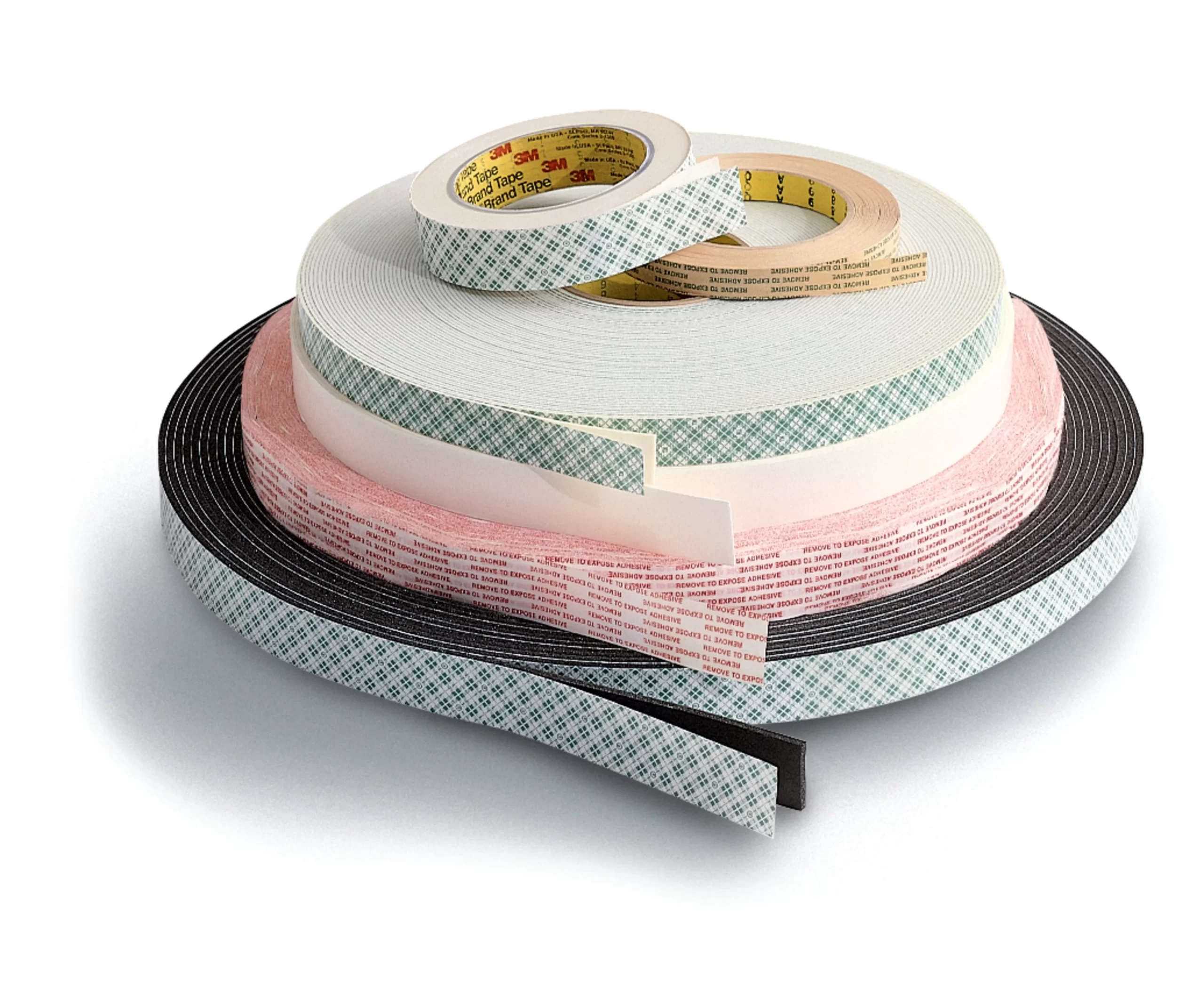
It can be used to secure LED strip lights to various surfaces, including walls, ceilings, and cabinets.
Pros and cons
Double-sided tapes are easy to apply and do not require any special tools or equipment, which makes them a great adhesive tape to restick LED light strips. It is also a clean and mess-free option, as it does not leave any residue behind.
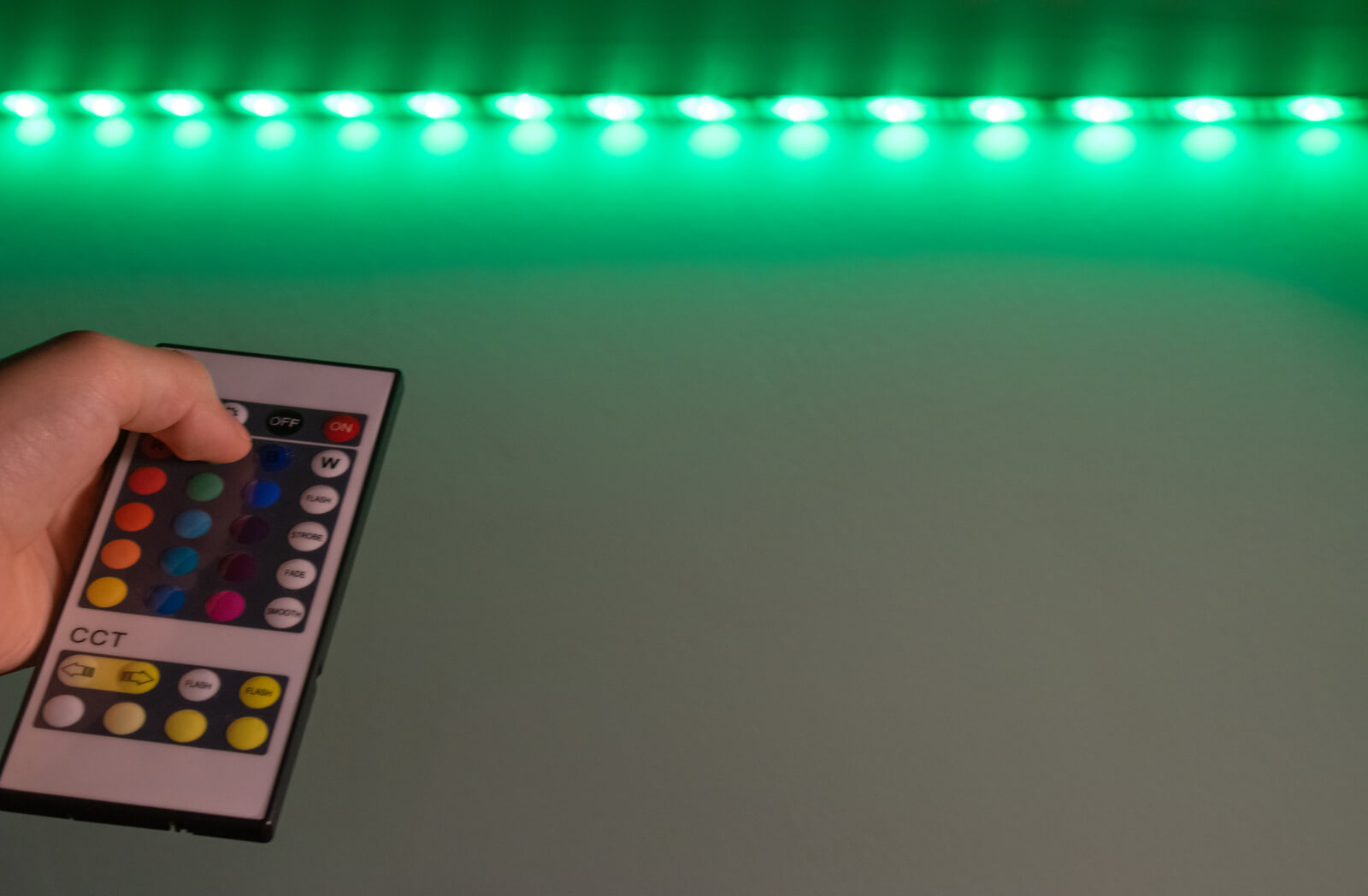
Yet, it is vital to use the correct type of double-sided tape for the specific surface you are working with. Some tapes may not provide a strong enough bond for certain surfaces or may not hold up to the weight of the LED light strips.
Mounting putty
Using a mounting putty, also known as mounting or adhesive tape, is another popular method for attaching LED strip lights. It is specifically designed to hold heavy objects in place and is usually made of a strong, durable material such as foam or rubber.
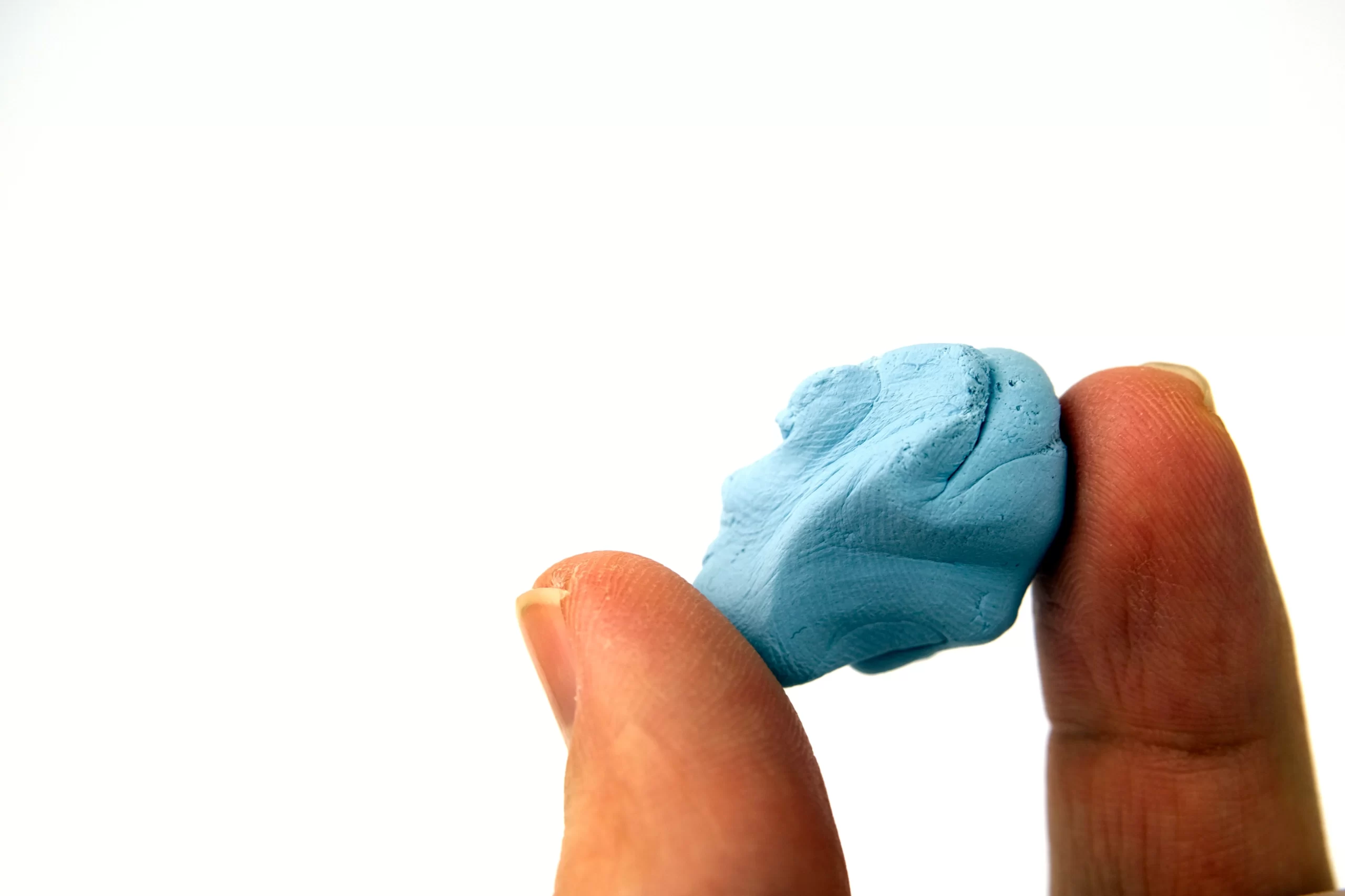
To use it, simply clean the surface where the LED light strips will be placed, cut it to the desired length, and press it onto the back of the strip lights. Then, press the LED light strips onto the desired surface and hold for a few seconds to allow it to adhere. Use the same technique to restick LED light strips.
Pros and cons
The main advantages of using mounting putty are that it is effortless to install and doesn’t require any special equipment.

It is also a good option for attaching LED strip lights to irregular or uneven surfaces, as the tape can conform to the shape of the surface.
Nonetheless, note that mounting putties may not be as strong as other methods, such as screws or clips, and may not be suitable for heavy or high-traffic areas. It is not recommended for use on wallpaper, as the tape may damage the surface.
Hot glue
Using a hot glue gun to attach LED light strips can be a simple and effective method, but it’s important to consider a few factors before proceeding.
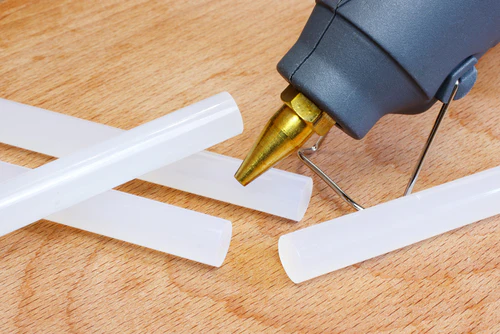
Do not forget to test the glue on a small section of the lights before applying it to the entire strip to ensure that it will hold securely.
Always make sure to follow all safety precautions when using a hot glue gun, including wearing protective gear and using it in a well-ventilated area.
Pros and cons
One advantage of using a hot glue gun is that it provides a strong, quick-drying adhesive that can easily be reapplied if needed.
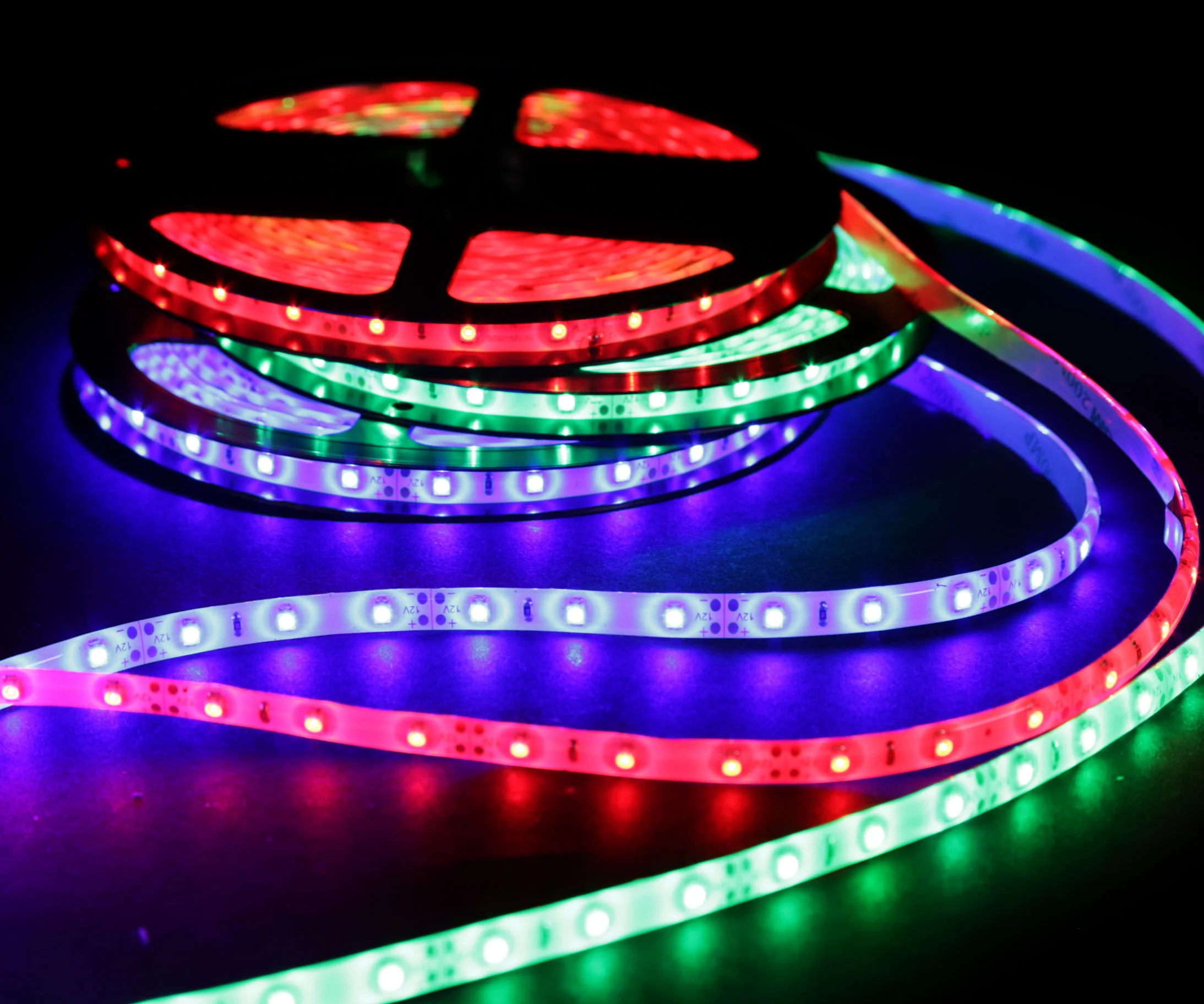
However, it’s important to use a low-temperature glue gun to avoid damaging the LED strips.
Additionally, be sure to apply the hot glue sparingly to avoid making a mess or causing the lights to become too bulky.
Velcro strips
Velcro strips can be a convenient and easy way to attach or restick LED light strips to a surface.
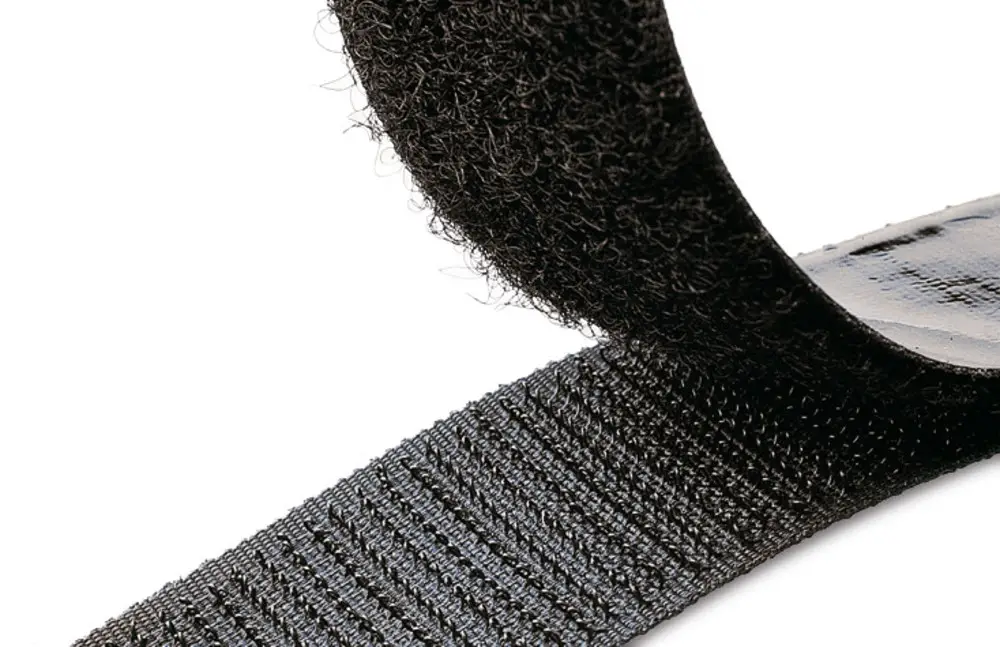
The strips are available in various widths and can be easily cut to size to fit the length of the LED strip light.
To use Velcro strips, simply remove the backing from one side of the strip and attach it to the back of the LED strip. Then, remove the backing from the other side of the strip and attach it to the desired surface.
Pros and cons
This method is especially useful for surfaces that are not smooth or even, as the Velcro strips can grip onto rough or uneven surfaces.
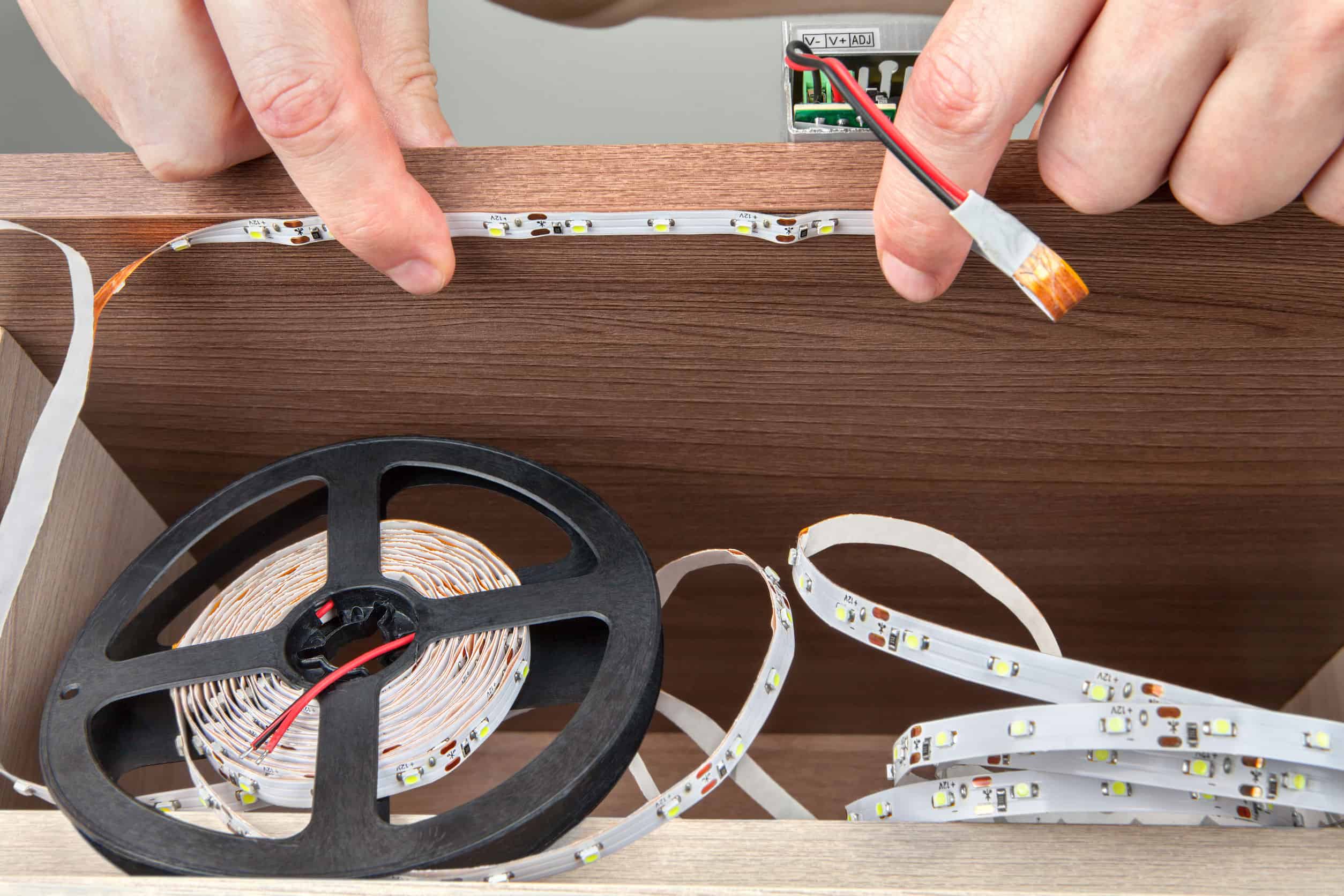
One advantage of using Velcro strips is that they can be easily removed and reattached without damaging the surface or the LED strip.
Additionally, Velcro strips may not provide as strong of a hold as other methods, such as mounting tape or hot glue, so they may not be suitable for attaching LED strips in high-traffic areas or in areas where the lights may be subjected to harsh conditions or vibration.
Adhesive backing
The adhesive backing is a typical method to stick LED strip lights. It is a thin layer of material with an adhesive side that can be applied to the back of the LED strips.
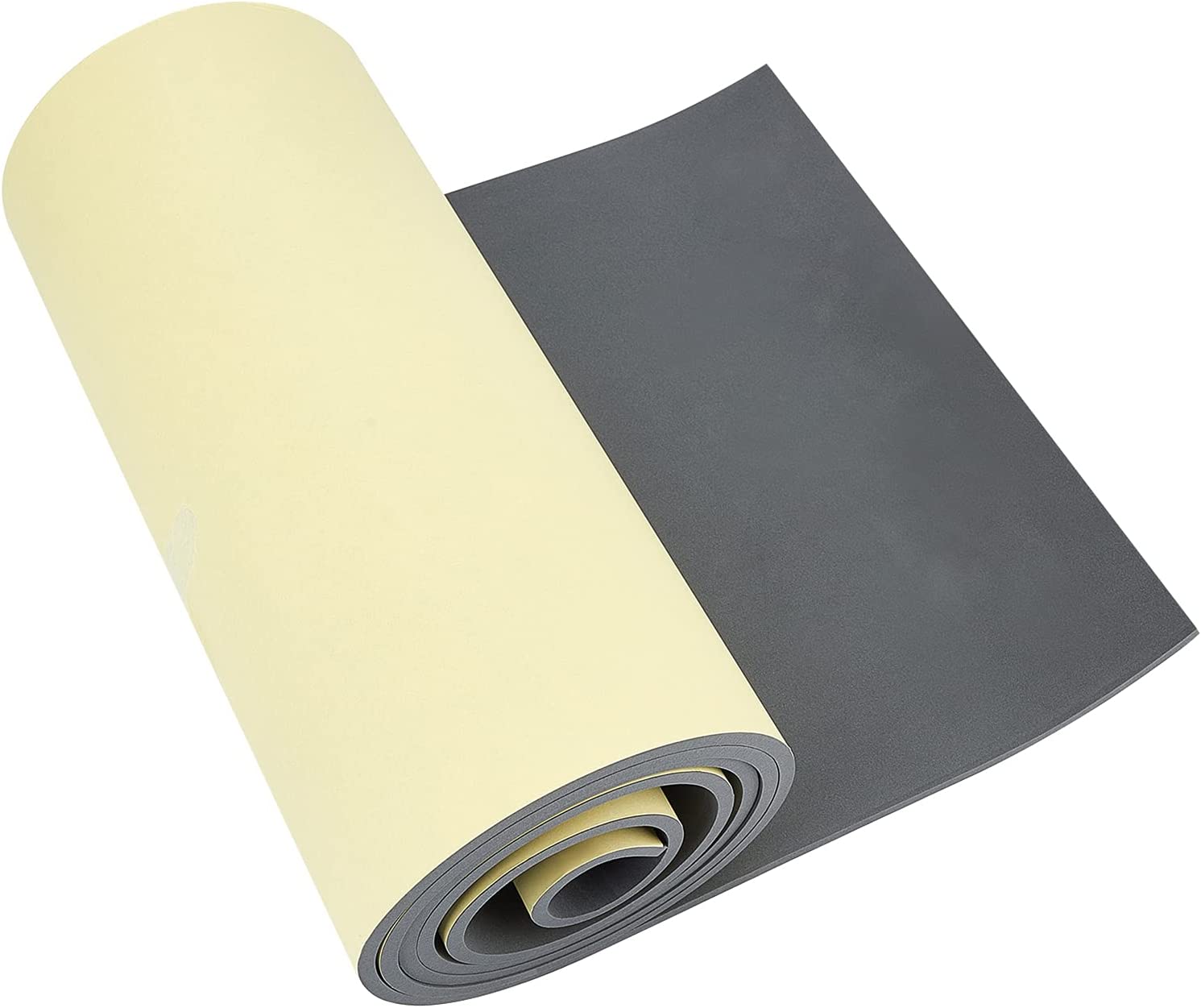
To use adhesive backing, you simply peel off the backing paper, expose the adhesive, and press the LED strip lights into place.
The adhesive backing is easy to use and can be a convenient option for quickly attaching LED strip lights to a surface. But it may not be as secure as other methods and may not hold up well to frequent handling or movement.
Using adhesive backing on certain surfaces, such as wallpaper or freshly painted walls, is not recommended as it may damage or remove the surface when removed.
Tips for maintaining LED strip lights
Using super glue on LED strip lights is a common and quick method for attaching the lights to a surface.
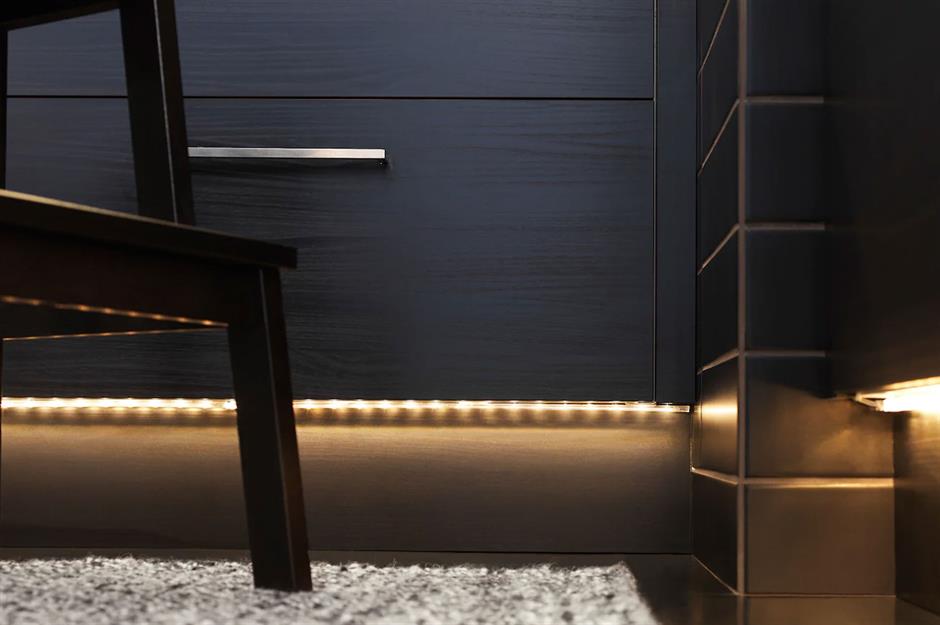
It is noteworthy to use the proper techniques and take certain precautions when applying the super glue to ensure that the lights remain secure and function properly.
One important factor to consider when using superglue on LED light strips is the type of superglue you use.
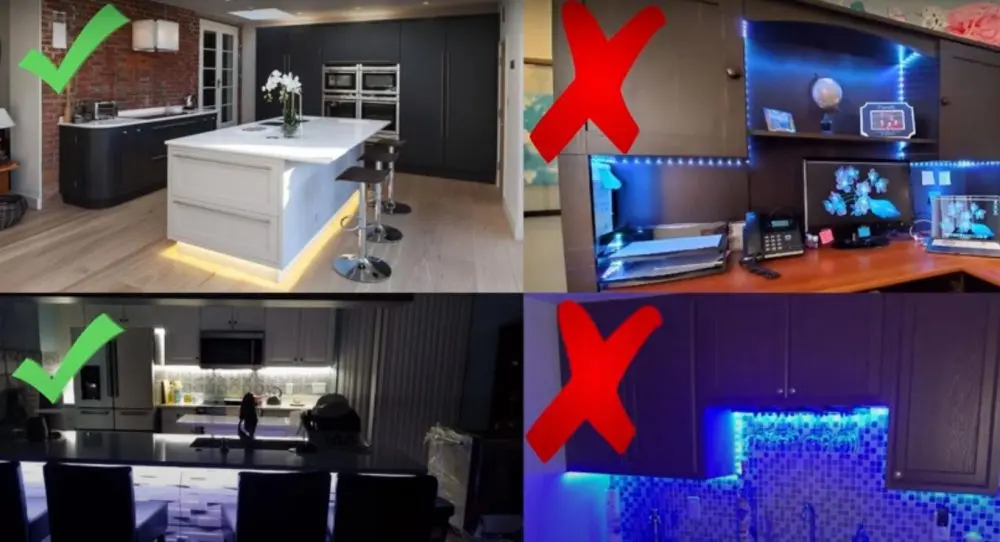
Choose a high-quality, waterproof superglue that is specifically designed for use on electronics. This will help to ensure that the glue does not corrode or damage the lights over time.
To remove excess adhesive, you can use a sharp knife, a cloth soaked in rubbing alcohol, or an adhesive remover. A commercial adhesive remover is a great solution If the adhesive is still not coming off.
Conclusion: Can you use super glue on LED strip lights?
Using super glue on light strips can be a viable option for temporary or emergency repairs, but it may not be the most suitable choice for long-term use or larger installations.
Super glue can provide a strong and fast-drying bond, but it can also have some drawbacks, such as the potential to cause damage to the lights or to the surface to which they are being applied.
Also, superglue may not be as durable as other adhesives specifically designed for use with light strips. It is important to carefully consider the specific needs of your project and to choose the appropriate adhesive accordingly.
Overall, whether or not to use super glue on LED strip lights is a personal choice that depends on your needs and preferences. If you decide to use it, be sure to follow the proper techniques and take care of your lights to get the most out of them.
FAQ
What glue can I use on LED strip lights?
Various types of adhesives can be used on LED strip lights, including double-sided tape, mounting tape, hot glue, and industrial-strength adhesives.
Super glue is a fast method to stick light strips, while hot glue requires a special glue gun.
It is important to choose an adhesive that is compatible with the material of the LED strip and the surface it will be attached to.
Can you use glue to stick LED lights?
Yes, glue can be used to stick LED strip lights, but it is important to choose the right adhesive for the specific application and to follow the manufacturer’s instructions for installation and maintenance.
What is the best adhesive for LED lights?
The best adhesive for LED lights will depend on the specific materials being used. Some options that may work well for LED lights include mounting tape, silicone-based adhesives, and industrial-strength adhesives.
Can you superglue LED strip lights?
Super glue can be used on LED strip lights in some cases, but it may not be the most reliable option. Super glue can be difficult to remove and may cause damage if the lights need to be repositioned or removed.
The adhesive you use must be suitable for both the surface you’ll be attaching the LED strip and the materials of the LED strip itself.
